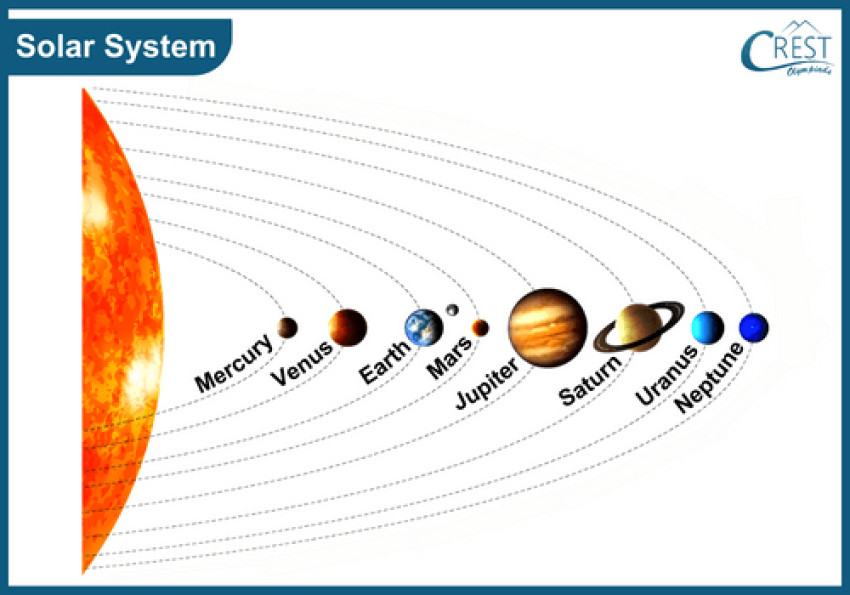
Our Universe
a) Our Universe is a vast and incredible expanse filled with many things like dust, gas, galaxies, planets, stars, rocks, clouds, and living creatures like us.
b) Stars and galaxies make up a small part of the entire universe. Galaxies are enormous systems of stars, gas, and dust held together by gravity.
c) Our solar system, which includes eight planets, their moons, asteroids, comets, and meteoroids, orbits around the sun.
d) We are part of the Milky Way Galaxy, which contains millions of planetary systems like ours, and the universe itself has millions of galaxies.
e) The planets in our solar system, their moons, stars, and other celestial bodies are like our neighbours in this vast universe.
Planet Earth
a) Earth is our home in the vast universe. It is the third planet from the sun and receives enough sunlight for life to exist.
b) Earth is surrounded by a layer of air called the atmosphere, which contains gases like nitrogen, oxygen, and carbon dioxide that are important for life.
c) Three-fourths of Earth's surface is covered in water, which is why it is sometimes called the "blue planet."
d) Earth has both land and water on its surface. Its shape is called an oblate spheroid, meaning it is a bit bulged at the equator and flatter at the poles.
Our Solar System
a) In the middle of our solar system, we have the sun.
b) The solar system is made up of the sun, planets, their moons, dwarf planets, comets, meteors, and some rocks and gases.
c) If we look at the shape of the solar system, it's like a stretched-out oval. We call this shape an "ellipse." It's kind of like a squashed circle.
Planets
a) Each planet has its own special path, kind of like a road or a track. We call these paths "orbits." The planets follow these orbits and go around the sun in a fixed path.
b) We can group them into two types: the inner planets and the outer planets.
Inner PlanetsOuter Planets
1. The inner planets are the ones that are closest to the sun.1. The outer planets are much farther away from the sun.
2. They are Mercury, Venus, Earth, and Mars.2. They are Jupiter, Saturn, Uranus, and Neptune.
3. These inner planets are smaller, made mostly of rocks, and don't have many moons.3. These outer planets are really big, with rings around them! They are also made mostly of gases and have many moons that go around them.
4. They have shorter paths as they go around the sun. They take a little less time to complete their journey.4. They have longer paths around the sun and it takes them a long time to go around once.
Planets in Our Solar System
Each planet of the solar system is special and unique in its own way, with different sizes, colours, and moons.
a) It's the smallest planet and the one closest to the Sun.
b) It takes 88 days for Mercury to go around the Sun.
c) Mercury doesn't have any moons.
2. Venus
a) Venus is the second planet from the Sun.
b) It's known as the hottest planet and often called Earth's "sister planet" because they are similar in size.
c) People sometimes call it the morning or evening star because you can see it in the sky at dawn and dusk
d) Venus also doesn't have any moons.
3. Earth
a) Earth is the third planet from the Sun.
b) It's also called the blue planet because it has lots of water. We have air to breathe, which is very important for living things.
c) Earth has one moon.
4. Mars
a) Mars is the fourth planet from the Sun.
b) It's often called the red planet because it has a rusty colour. Mars has really tall mountains and deep canyons.
c) Mars has two moons.
5. Jupiter
a) Jupiter is the fifth planet from the Sun, and it's the biggest planet in our solar system.
b) It's so big that it has 95 moons.
6. Saturn
a) Saturn is the sixth planet from the Sun.
b) It's the second-largest planet.
c) Saturn is famous for its beautiful rings made of ice and dust.
d) Saturn has 146 moons.
7. Uranus
a) Uranus is the seventh planet from the Sun.
b) It's the third largest planet.
c) Uranus is a bit different because it spins on its side.
d) Uranus has 27 moons.
8. Neptunea) Neptune is the eighth planet, and it's the farthest one from the Sun.
b) It's really cold and windy on Neptune.
c) Neptune looks blue because of something called methane.
d) Neptune has 14 moons.


